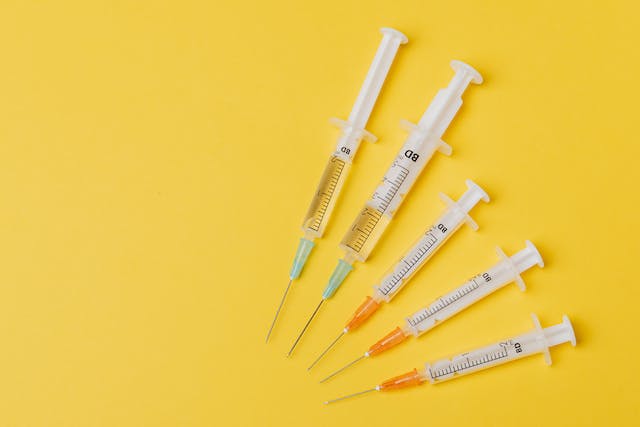We have all heard the word “plastic.” Plastic is a crucial component of our everyday life, but do you know how it is made? Plastic is manufactured by various methods such as Injection Molding, Blow Molding, 3D Printing, Plastic extrusion, Rotational Molding, etc.
This article will give you extensive information on all of the essential parts of plastic manufacturing processes that you should be aware of. Since the previous few decades, there has been a significant demand for plastic.
Because of this high demand, the plastic sector produces more than 300 million tonnes of plastic each year. Surprisingly, individuals throughout the world use around 500 million single-use plastic bags per year.
Plastic appliances may be found in almost every household, workplace, or even enterprise. Plastic characteristics such as durability, unbreakable substance, mobility, and lightweight quality make it a popular choice among all people.
Moreover, tons of plastic are used to make bottle caps, containers, plastic bags, utensils, bottles, boxes and cooking utensils, among other things.
For plastic part assembly, a variety of plastic manufacturing processes are currently available. Plastic home appliances manufacturers attempt to select the optimum plastic assembly process that meets its targeted product niche, quality, quantity, cost, and corporate objectives.
Manufacturing Plastic Home Appliances
Various plastic manufacturing procedures have been created to accommodate multiple applications, part geometries, and plastic kinds. It is critical for any designer or engineer working in product development to be familiar with today’s manufacturing options and the new results that indicate how parts will be manufactured in the future.
This article gives an overview of the most plastic home appliances manufacturing techniques.
Methods used in Manufacturing Plastic Home Appliances
Numerous processes can be used to manufacture plastic appliances. Each approach has its distinct features and specializations. The lead time, cycle time, setup cost, form, cost per unit, and volume of each process varies. Some procedures need more time to produce than others.
Moreover, the following are the most common and widely utilized methods:
- Blow Molding
- CNC Machining
- Vacuum Forming
- Polymer Casting
- Injection Molding
- 3D Printing
- Extrusion
- Rotational Molding
What you wish to manufacture influences your choice of the production process. Some methods generate the same repetitious personalized plastic designs, whilst others may create unique and imaginative arrangements. A business owner can produce both lightweight and heavyweight goods.
However, when we talk about processes to make high quality and cost-effective home appliances out of plastic, Injection Molding is the most popular.
What is Injection Molding?
Injection molding is a manufacturing method used to produce items in high quantities ranging from hundreds to millions. In this process, melted resin is pumped into a hollow mold until it is filled.
The injection moulding process employs high temperatures and intense pressure to adequately serve the interior with molten plastic resin or liquid polymers. After that, the molds are cooled to release the finished plastic components. The technique is highly flexible, capable of producing a wide range of components for a wide range of applications.
How does Injection Molding Works?
To manage the material flow correctly, appliance injection mold must have a high accuracy match between the two mold parts. The mold must be created to manufacture a smooth, precise product. Injection molds are often made of steel or aluminium and finely machined to produce the intended product’s characteristics.
Once a functioning, error-free mold has been created, the injection molding process is somewhat repetitious. It also has a low scrap rate compared to other manufacturing methods like CNC machining, a subtractive process that removes significant amounts of the original material blank.
For high volume production, the injection molding technique is very repeatable and dependable. Due to the ability to manufacture multi-cavity injection mold components, where many parts are generated with one cycle after the first part is produced, the second will be almost similar. Other benefits include various material options, cheap labour costs, minimum scrap losses, and minimal post-molding finishing processes.
However, one drawback of injection molding is the high initial costs of mold creation due to design, testing, and tooling needs and the longer necessary lead times. During the injection molding process, some complicated bespoke components may have issues like warpage or surface imperfections.
As a result, injection-molded components must be carefully engineered to account for any changes in geometry as they cool, as well as material selection to ensure stability.
The Advantages of Injection Molding for Appliances
Why do so many appliance manufacturers rely on an injection molding firm to produce plastic parts? For more than a half-century, injection molding has been one of the principal methods for creating plastic components. Appliances employ injection molded parts for various purposes because they are highly adaptable and offer multiple benefits over other production processes. These are –
- High-pressure injections allow polymers to reach even the most inaccessible portions of a mold, allowing for elaborate forms and patterns that reduce the need for extra processing after molding.
- Molding generates a large number of parts at a high rate. Although the design and finalization of each mold may take some time, the production process follows suit quite rapidly. You can utilize mold designs forever once you have them.
- Injection molding allows for the simple insertion of fillers to change the characteristics of a material. Inserts and other components inside the mold enable even more sophisticated procedures, such as overmolding.
Wrapping Up
After going through the article, you must have got one thing: although injection molding appears to be a complex process, it is the most prevalent manufacturing method for plastic home appliances due to its versatility and efficiency to make a wide range of daily objects.
Moreover, injection molding is one of the most cost-effective methods of producing both working parts, finished home appliances, and other plastic goods.

